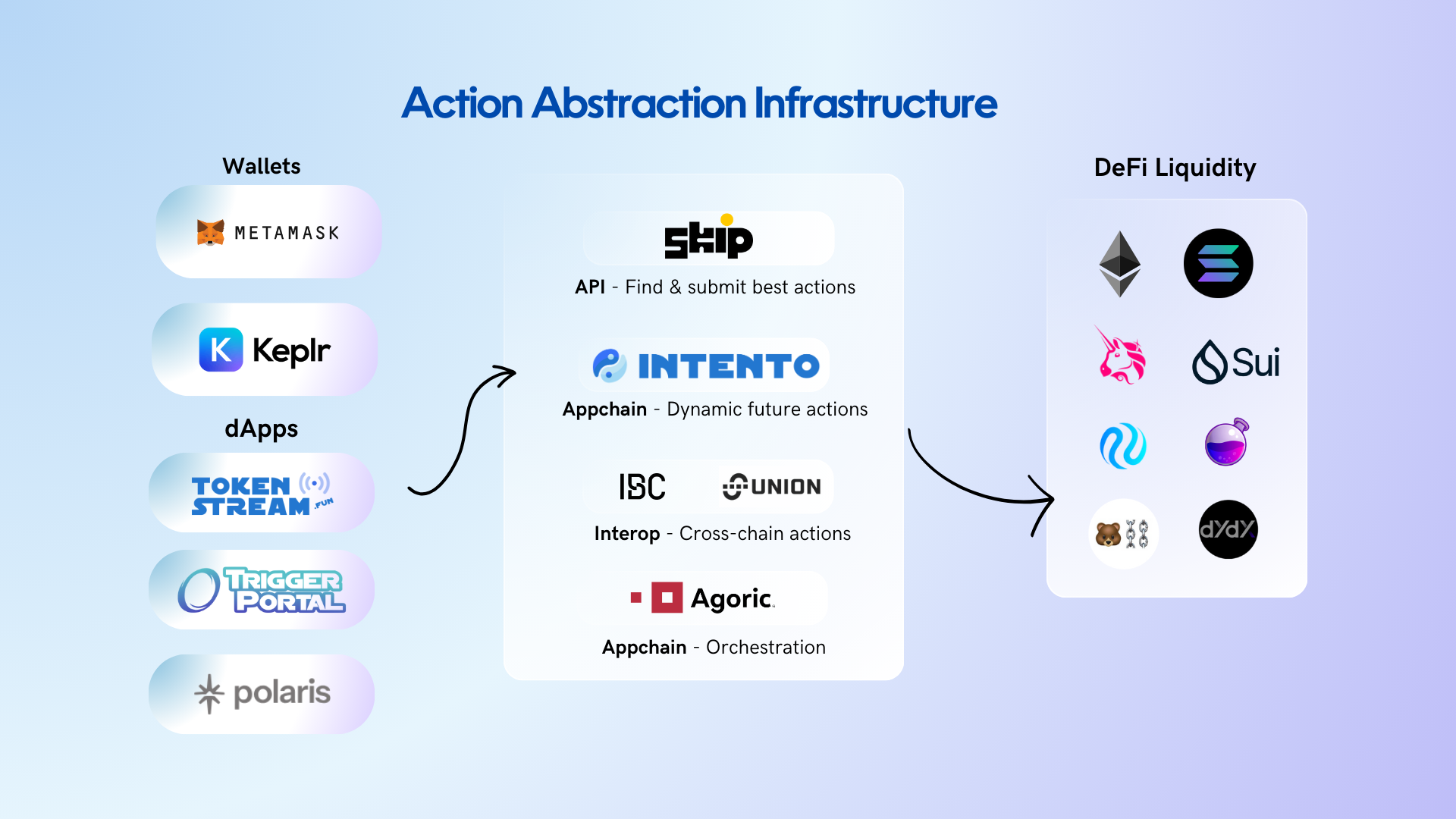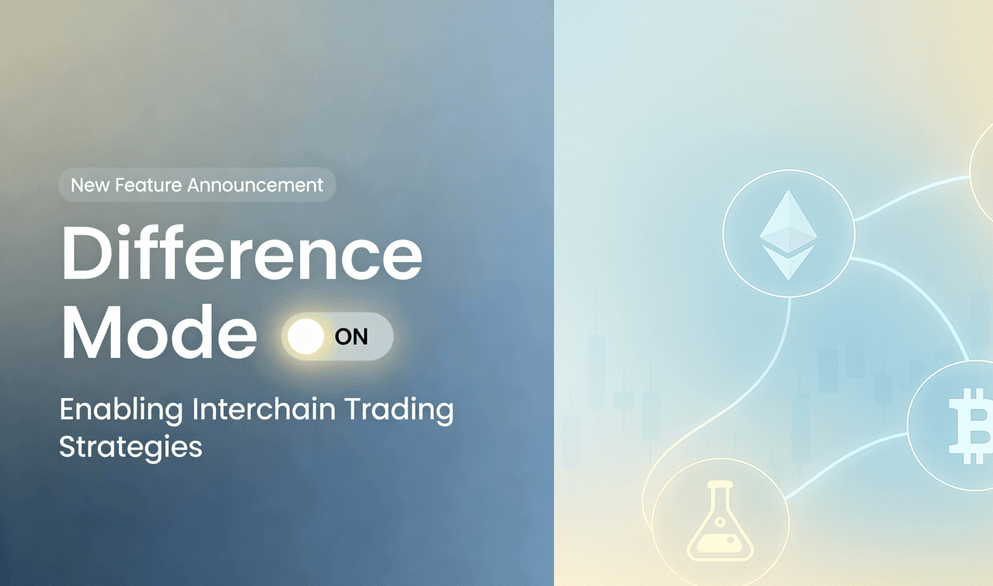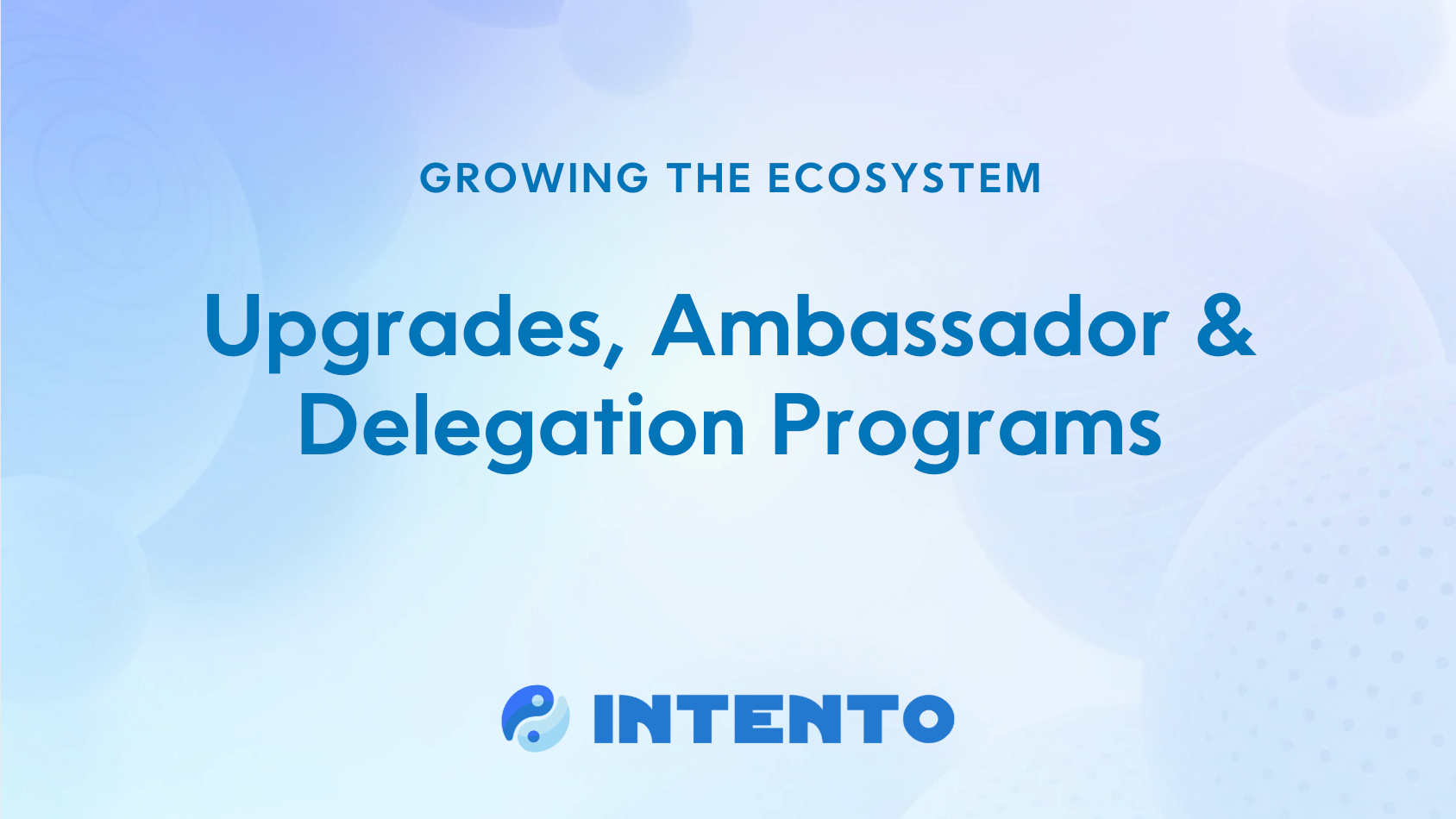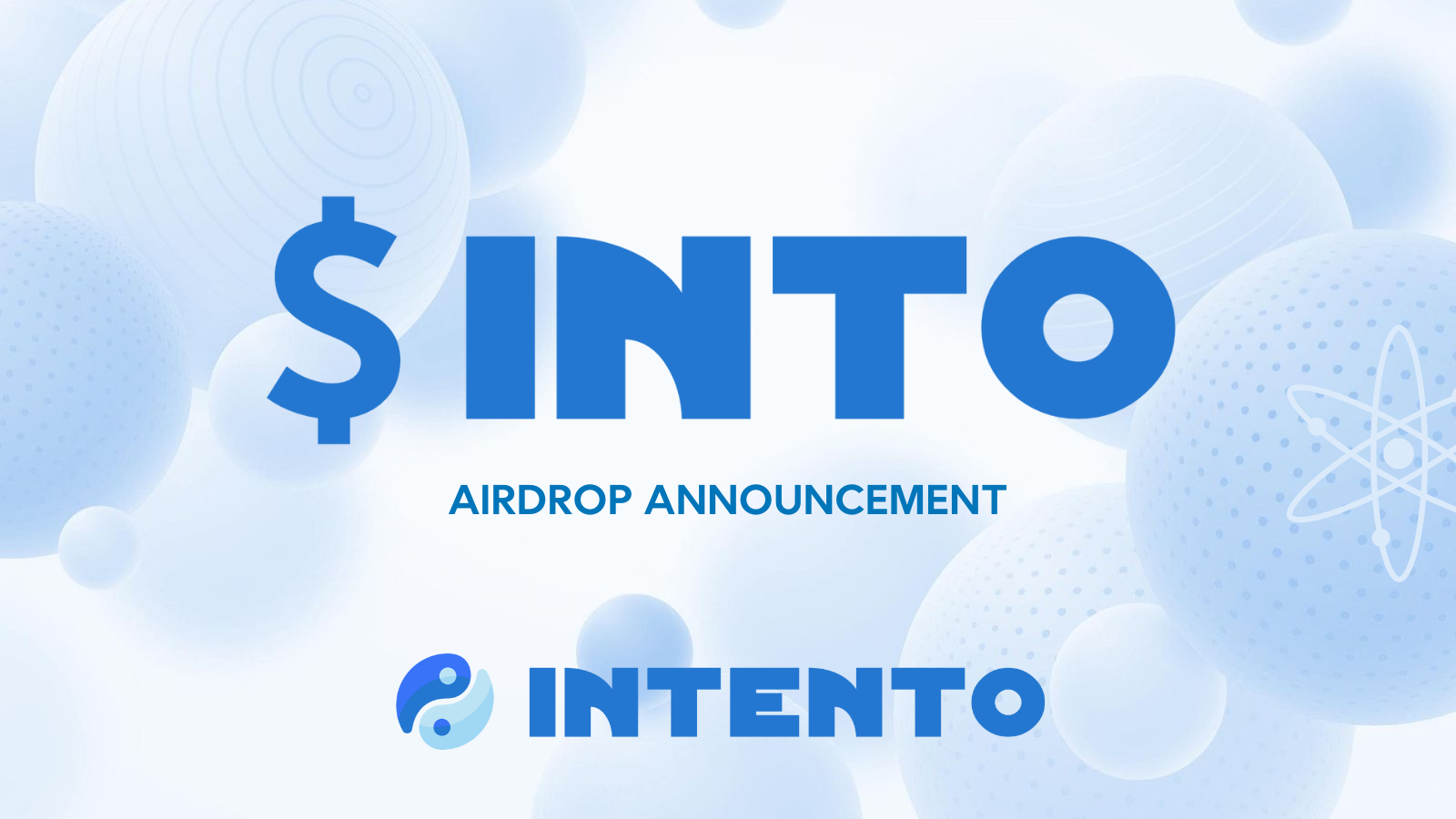The idea behind DeFi is an interconnected ecosystem where users have complete control over assets, intermediaries are redundant, and capital moves freely across a vast network of blockchains. But reality reveals a fragmented system where complexity, high gas fees, and customized protocol-specific adjustments act as significant barriers.
What’s missing is a foundational layer that manages, orchestrates, and executes actions seamlessly across chains. That is why we introduce the concept of Action Abstraction: Action Abstraction Infrastructure (AAI) focusses on the backend-facing part of Chain Abstraction architecture and acts as the brain of cross-chain DeFi workflows. Action Abstraction unifies DeFi operations, allowing developers to build fluid cross-chain workflows easily and dynamically, while users interact with a cohesive DeFi experience.
This infrastructure represents a shift from users interacting with specialized intermediary protocols to users self-managing complex sequences of actions across blockchains.
Chain Abstraction, Account Abstraction, and Action Abstraction
To understand how Action Abstraction works, it’s helpful to distinguish between Chain Abstraction and Account Abstraction. Each serves as a key part of transforming DeFi:
- Chain Abstraction involves simplifying the interface between blockchains, enabling seamless movement of assets and data without requiring users to understand or navigate the differences between each chain.
- Account Abstraction hides the intricacies of transaction management and makes it easier for users to interact with protocols, often without the need for direct wallet interactions at each step.
Intent-driven actions is the next step of Chain Abstraction—Action Abstraction allows users to specify their intent, leaving the infrastructure to handle execution across chains autonomously and dynamically where possible. This is where Action Abstraction stands apart from traditional blockchain middleware: it’s built around user-defined intents.
The Case for Action Abstraction in DeFi
DeFi’s growth has led to increasingly complex protocols and a need for more modular, scalable, and efficient systems. However, cross-chain functionality remains difficult to establish, as each chain has its own tech stack, configuration and gas fees. Hence, DeFi users, whether they’re individuals or institutions, require an environment where they can easily automate actions and manage assets across chains without the need to develop or audit custom smart contracts.
Action Abstraction addresses this need by specifying user intent into actions, thereby abstracting away the need for custom code and manual workflows. This reduces the necessity of specialized smart contracts deployment and users needing to have repeated interaction with protocols. With Action Abstraction, actions—like setting up asset transfers, swaps, and liquidity management—are based on intent: users define what they want, and the infrastructure makes it happen across chains.
Intent-Driven Architecture
Intent-based actions aren’t new; centralized systems have been using them to automate finance and tech applications for decades. In the blockchain space, the focus is on making these actions transparent and trustless, with intent serving as the core principle behind DeFi workflows. AAIs create this intent-centric architecture, where every aspect of DeFi interaction—swaps, asset transfers, and trades—is driven by user-defined outcomes, not just individual transactions.
Some key examples of AAI in action are the Skip:Go API and the Agoric appchain. Skip:Go is an interop platform that helps users go anywhere and do anything and makes cross-chain simple for developers and users. It acts as a GPS for DeFi, finding the most efficient routes for asset swaps based on a user’s intent. Users specify an outcome—like “transfer asset X to chain Y at the lowest cost”—and Skip:Go determines the best path. It is used in products like the Keplr wallet to provide a superior UX to end-users. Another example is Agoric. It provides the orchestration via smart contracts to automate workflows, allowing protocols to specify based on asynchronous tasks. These protocols make it easier for users to care less about what chain they are using and abstract away the specific blockchain messages from the intended set of actions.
This design enables developers and users alike to enjoy unified, cross-chain dApps and wallets without constantly monitoring each chain’s fees and conditions or manually initiating each transfer.
Intento: Dynamic Actions Anytime, Anywhere
Intento is designed to empower users with continuous and dynamic intent-driven workflows. Once a user sets an intent, Intento manages the workflow autonomously using standards like IBC—whether it’s a series of transfers, an asset allocation sequence, or a specific swap path. Gas fees are abstracted with hosted Interchain Accounts, and actions are made dynamic with stoplight configurations, conditions on responses and feedback loops. We’re also working on Interchain Queries so actions become even more dynamic.
Intento’s design works seamlessly with other AAI components like Skip:Go for initial swaps and Union for cross-chain account management. Intento allows for smart workflows such as long-term asset management across chains, without the need for frequent oversight. For example, in products like tokenstream.fun, Skip:Go finds the best initial swap route, and Intento handles follow-up actions autonomously in the future, creating a continuous cross-chain flow.
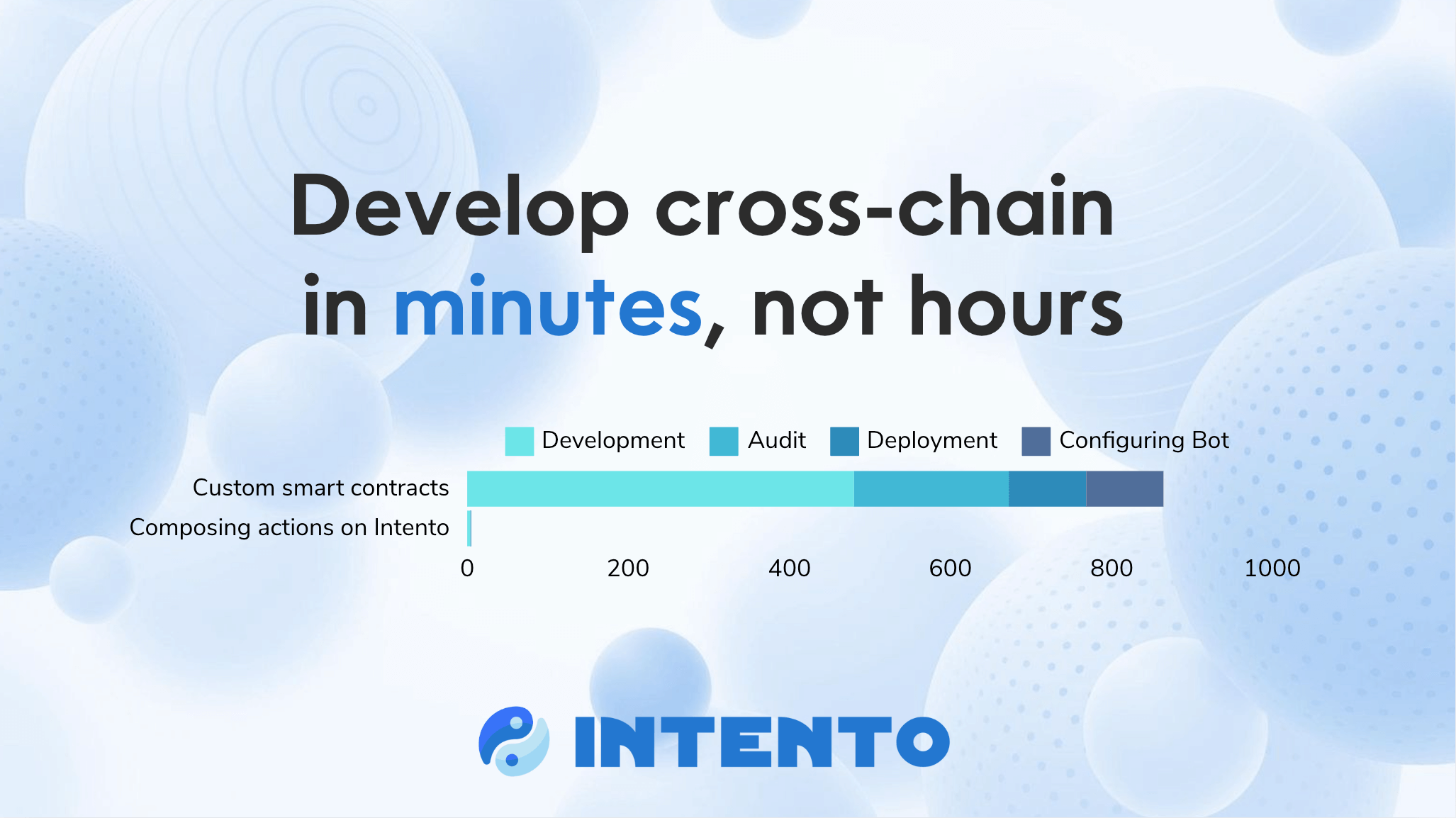
Intento’s Intento Portal enables interchain builders to create no-code workflows, allowing users to define conditions, thresholds, and triggers in a self-custodial manner without having to develop or audit new smart contracts. This reduces development time from weeks to merely hours or even minutes. It is also a platform where users can share, copy, and create their intent-based actions so it can be redeployed easily in a few clicks.
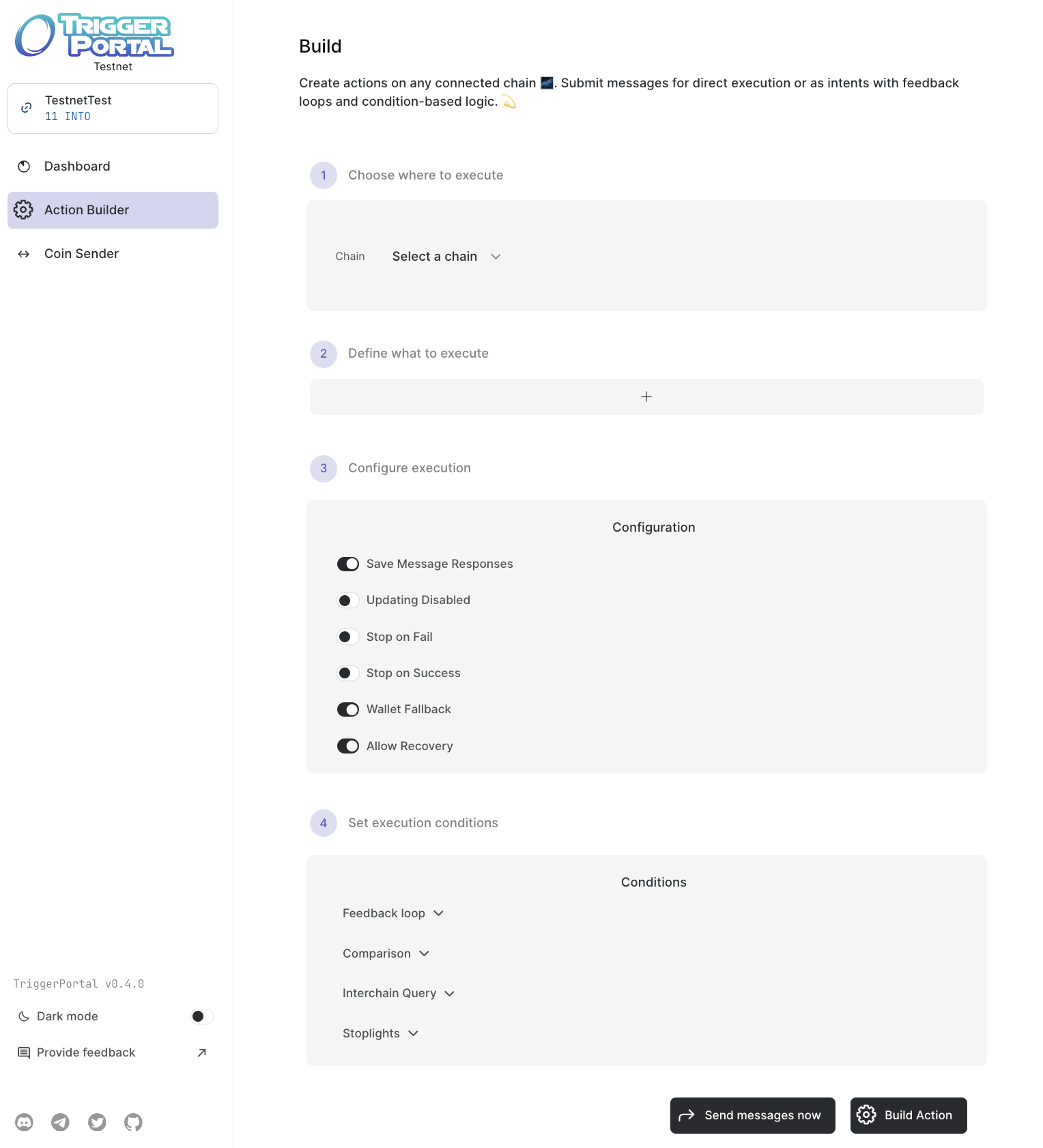
The flexibility and efficiency of Intento make it a transformative platform. It’s designed to reduce gas costs by as much as 10 times compared to custom solutions, bringing DeFi’s original vision—user autonomy with minimal intermediary overhead—closer to reality.
Action Abstraction is the Future of DeFi
As DeFi scales, Action Abstraction is set to redefine the space by making intent-driven actions effortless, autonomous, and secure. By enabling users to define intents and coordinating actions across chains, AAIs deliver the best of DeFi’s promise: control without friction. The future of DeFi is not just decentralized finance, but an ecosystem where intent drives interactions across a unified, autonomous cross-chain architecture.
For protocols, CTOs, and developers, this shift means reduced operational complexity, fewer security risks from custom code, and streamlined development cycles, allowing teams to focus on building innovative products rather than managing integrations and custom bridges.
With Action Abstraction, DeFi becomes a user-centered and scalable ecosystem—one where users define outcomes, and the infrastructure takes care of the rest, creating a seamless experience across every chain, asset, and protocol.

